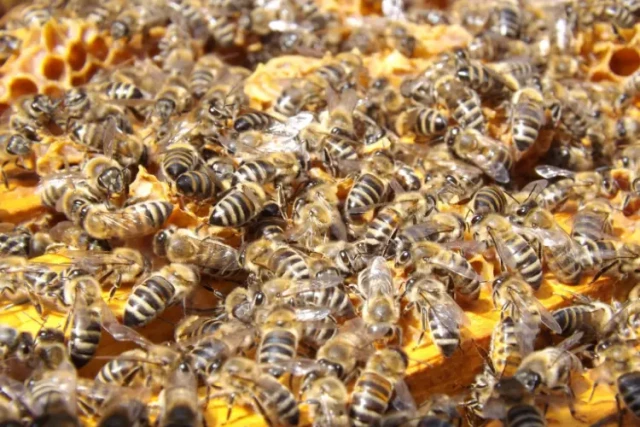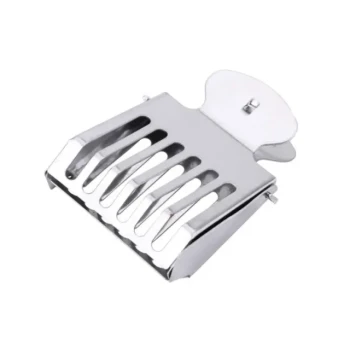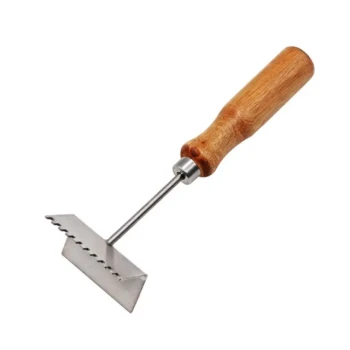Beekeeping gloves are your first line of defense against stings, but the wrong pair can hinder productivity. This guide helps you prioritize features—material, fit, and cuff design—for specific tasks while maintaining safety and dexterity.
Selecting Beekeeping Gloves for Optimal Safety and Efficiency
Material Choices: Sting Resistance vs. Tactile Sensitivity
Thin cotton gloves may seem breathable, but they offer minimal sting protection. Research shows that thicker, durable materials (like goat leather or nitrile-coated fabric) reduce sting penetration while allowing enough flexibility for hive inspections.
Key trade-offs to consider:
- Tropical climates: Opt for perforated leather or ventilated synthetic blends to prevent overheating.
- Precision tasks (e.g., queen rearing): Goat leather provides superior tactile feedback compared to bulkier alternatives.
Pro Tip: Gloves with double-layered palms add sting resistance without sacrificing grip.
Ergonomic Fit: Avoiding Hand Fatigue During Prolonged Use
Ill-fitting gloves cause blisters and reduce efficiency. Look for:
- Pre-curved fingers to mimic natural hand positioning.
- Adjustable wrist straps to secure the glove without cutting circulation.
A study of commercial beekeepers found that gloves with seamless interiors reduced irritation during 8-hour workdays.
Cuff Design: Preventing Bee Intrusion Without Restricting Movement
Bees exploit gaps. Prioritize:
- Extended cuffs (12+ inches) that tuck into sleeves.
- Elastic or drawstring closures to block entry points.
For apiaries with ground-nesting species, reinforced cuffs with sting-resistant lining are critical.
Advanced Considerations for Specialized Scenarios
Handling Aggressive Bee Species: Reinforced Protection
Africanized or defensive hybrids require:
- Double-layered leather on the backhand.
- Kevlar stitching at stress points to prevent tearing during sudden movements.
Note: These designs are heavier—reserve them for high-risk colonies.
Honey Harvesting: Waterproofing and Grip Enhancements
Sticky honey demands:
- Nitrile or rubber coatings to repel moisture and improve grip on jars.
- Machine-washable liners for hygiene during frequent use.
A survey of commercial apiaries revealed that textured palm grips reduced dropped frames by roughly 30%.
Put Your Safety First with HONESTBEE
Whether you’re inspecting hives or harvesting honey, HONESTBEE’s beekeeping gloves are engineered for your specific needs. Explore our wholesale-focused range designed for commercial apiaries and distributors—where protection meets precision.
Ready to upgrade your gear? Contact HONESTBEE today for durable, task-optimized gloves.
Visual Guide

Related Products
- Vented Beekeeping Jacket with Hood and Veil for Beekeepers
- 3 Layer Mesh Vented Sting Proof Beekeeping Suit with Hat and Veil
- Cotton Beekeeping Suit and Round Hat with Veil Bee Keeper Protective Gear
- Yellow Plastic Bucket Pail Perch for Beekeeping
- Heavy-Duty Stainless Steel Clip-On Frame Perch
Related Articles
- The Second Skin: A Beekeeper's Guide to Glove Longevity and Apiary Health
- Why White Bee Suits Outperform: Science, Safety, and Beekeeper Experience
- The Interface Problem: How a Glove's Design Dictates a Beekeeper's Success
- Essential Beekeeping Tools: How Strategic Preparation Boosts Hive Health, Safety, and Honey Yields




















